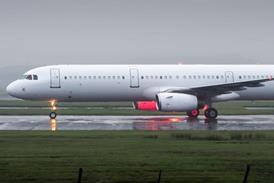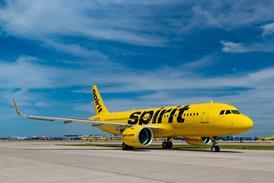The cargo arms of Air France-KLM and Lufthansa are both trying innovative strategies to deal with low-cost Asian competition. Mergers and joint ventures may hold the key
Air France-KLM put detail on its proposed single-management structure for cargo in mid-February, a sign of how quickly the two carriers are moving towards genuine synergies such as network co-ordination and a common IT platform. Lufthansa-led WOW and SkyTeam Cargo, which includes Air France-KLM, have struggled with the same territory for over five years with little result.
Marc Boudier, executive vice-president of Air France Cargo, puts the difference succinctly. "Optimisation is not really a word you can use about an alliance," he says. "If there is optimisation, it is always route- or market-specific. You might have a common purchasing policy or harmonised product lines, but you never get optimisation of pricing or network. These only exist in a merger."
Partly this is just common sense, but it is also an indication of the limitations of alliances in answering the issues that really face cargo departments. For Michael Wisbrun, Boudier's counterpart in KLM, it is about how relatively high-cost European carriers can meet Asian competition. "Asian carriers are growing and are pumping capacity into the system," he says. "If we don't get our act together, we will be bypassed."
Boudier agrees, suggesting that economies of scale are the only way to get costs down, and so counter falling yields. He also points out that the biggest air cargo growth – up to 10% annually, compared with the 6% global average – is predicted to be in Asia. "That means we have to work doubly hard to keep our global market share," he says.
If economies of scale are indeed what matters, the daring vision of "the European House", the name given to the single management structure, should go a long way to help. Although actual operations will remain separate for regulatory reasons, from October Air France and KLM will have a single management team – headed by Wisbrun – and joint managers for sales; marketing and network; and strategy and IT . Two come from Air France, one from KLM.
There will be a single sales team, although possibly not in every location, and both carriers will migrate to Air France's Pelican IT system. Whether the European House (which in due course will be renamed) will be a legal entity or just an informal structure within Air France-KLM has not yet been decided and may depend on whether Alitalia is ready to join. If there is a legal structure, it will be a GIE – the same French partnership structure that Airbus had for 30 years.
Co-ordinating capacity
Perhaps the most striking difference between the European House and each of the two cargo alliances will be in the way they co-ordinate capacity. Although the two alliances like to boast of a seamless global network covering 500 or so stations, in practice they have done little more than set up interline agreements. Air France-KLM is looking at aligning its freighter and combi network from top to bottom, however.
One major decision has already been taken. In November, Air France withdrew its Boeing 747 twice-weekly freighters from Singapore, and let KLM operate that route. This move meant that Air France lost half its monthly capacity to Singapore, but it more than compensated by adding one freighter frequency a week each to Atlanta, Bangkok and São Paulo. Boudier says that this reorganisation alone accounted for half the two carriers' cargo growth in November and December, and predicts that for the year to March synergies from the merger will reach €10 million ($13 million), which is in the order of €2 million ahead of target.
Optimisation of this kind would be almost impossible in SkyTeam, Boudier admits. "What we have put in place in a year and a half would take much longer in an alliance," he says. "SkyTeam is a toolkit and a product portfolio, but members are not obliged to use all the tools. But when you merge, you use all the potential of the toolkit. You can go much further."
Although Air France-KLM still affirms its belief in SkyTeam Cargo, Boudier's words seem to suggest that alliances have now been relegated in importance at the carrier, and the same also seems true at Lufthansa Cargo, which is allied with Japan Airlines, SAS and Singapore Airlines in WOW.
WOW disappoints
Dr Andreas Otto, board member for Lufthansa Cargo, insists WOW has produced "huge growth rates" recently, but admits it has not become all Lufthansa hoped it would be. "When I joined the company five years ago the idea was that sooner or later we would have one cash box, because that is what the market requires. But we have discovered that for various reasons – legal issues, traffic rights – it is very difficult to do that." Lufthansa Cargo has thus decided to take more of a back seat in WOW from now on. He says: "We feel that after three or four years it is time to leave it to someone else to take the initiative."
Lufthansa Cargo has no other carrier with which to merge, so it is looking to partnerships for a global network. The carrier has bilateral deals with carriers as varied as Air China, LAN Cargo and South African Airways, as well as a long-haul freighter joint venture with DHL, which, Otto says, now uses one-third of Lufthansa Cargo's Boeing MD-11 freighter fleet.
But its solution to competing with Asian operators without spending on expensive freighters or high-cost German pilots is to manage the capacity of other carriers. This is where Jade Cargo International comes into play. The joint venture airline between Lufthansa and China's Shenzhen Airlines is due to be launched this year. Jade has a pretty clear aim from Lufthansa's point of view – to get a share of fast-growing intra-Asian and perhaps transpacific markets, with relatively little investment.
A deal inaugurated in September last year, whereby Lufthansa Cargo manages the transatlantic capacity of Star Alliance partner US Airways, does the same in the US market. Otto says the latter joint venture has added the equivalent of one and a half freighters a week to Lufthansa Cargo's transatlantic capacity. "But it has done this with no financial commitment from our side," he says. "Here and there we guarantee a minimum revenue stream, but that is it." Lufthansa's goal is to extend this kind of arrangement to other carriers. "We obviously hope to get the rest of US Airways' network and we are talking to other carriers," says Otto.
All of this leaves alliances looking rather pale by comparison. "We have tried, but so far we don't see an easy model which would allow us to do a sales joint venture," says Otto when asked about possible further sales synergies with WOW partners. "The long-term vision has to be a joint cash box. Anything less than that, and we don't see benefits."
PETER CONWAY IN LONDON
Source: Airline Business























